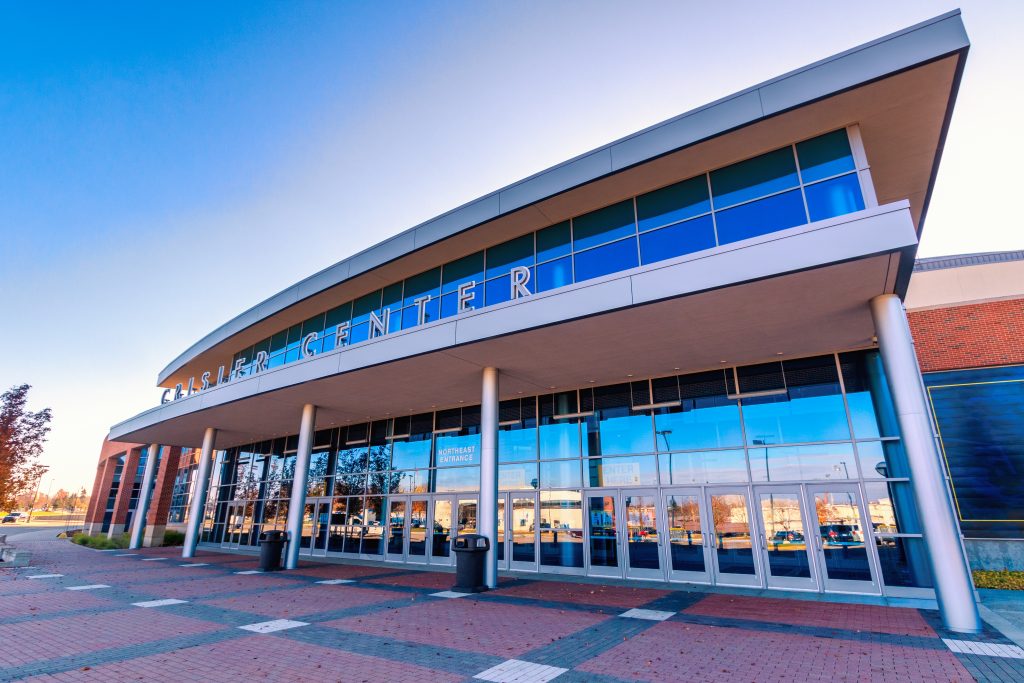The University of Michigan community will return to campus this fall with most classes taught in person, residence halls open at nearly 80 percent capacity, athletic events with fans in the stands, and the campus abuzz with activity. This will all be accomplished within the boundaries of the state and local public health safety measures in place at that time.
Fall plan to include most classes in person, open residence halls
The plan for the Ann Arbor campus is predicated on the presumption that all faculty, graduate student instructors and staff who wish to be vaccinated against COVID-19 will have access to a vaccine prior to the start of the fall semester and that a significant proportion of students will have been vaccinated as well.
If the levels of vaccination exceed expectations, the university will adjust as the semester progresses by further increasing in-person activities and relaxing public health measures.
President Mark Schlissel made the announcement March 12 at the start of a live COVID-19 briefing over Zoom that also included other university leaders. The announcement came just after the U-M men’s basketball team claimed its first victory of the Big Ten tournament in Indianapolis, defeating the Maryland Terrapins 79-66.
“Based on the hopeful trends of decreasing COVID-19 cases and increased vaccine supply — along with the collective efforts and creative will of the University of Michigan community — I’m pleased to announce that for the fall semester on the Ann Arbor campus, we will teach most classes in person and have greater occupancy in our residence halls, in-person dining and student support services, along with some continuing precautions to maximize health and safety for our university community,” the president said.
“This aligns with our goal of an innovative, responsible return to in-person education and a residential campus experience.”
Schlissel, a physician-scientist, said the recent COVID-19 developments and trends are bolstering optimism and indicate significantly lower risk.
“A third highly effective and safe COVID-19 vaccine has been approved, President Biden has called for all adults to be eligible for vaccination by May 1, we’re seeing fewer cases on campus and across the nation, and forecasts for hospitalizations are decreasing,” he said.
“Though a definitive vaccine timeline continues to evolve, we can expect that, by the end of the summer, the vast majority of our adult community will be vaccinated, and we will be moving quickly to a safer environment.”
While many details of the plan for the fall term remain to be developed over the coming months in close collaboration with the university community, the foundational expectations, announced March 12, include:
- Campus employees who have been working remotely during the pandemic will return to campus in a gradual, phased approach over the summer, based on the nature of their jobs, with some employees continuing to work remotely for a portion of their work week. Employees will receive adequate notice regarding work plans and will learn more in the months ahead from their immediate supervisors.
- Most moderate to small classes, seminars and discussion sections will be taught in person, while most large (lecture) classes will continue to be offered remotely. There could be variations by school and college for pedagogical purposes.
- Residence halls and living-learning communities will be open to welcome and serve students.
- Dining facilities on campus will offer in-person and carry-out meal options.
- Most student-facing services, such as libraries, museums, study spaces, Recreational Sports facilities, counseling, wellness and other support services will have expanded in-person opportunities, while continuing to maintain remote options.
- Research opportunities will continue to expand so that students at all levels of study — graduate and undergraduate — have opportunities to engage in research activities.
- U-M Athletics will welcome fans into the stands to cheer on the Wolverines at Michigan Stadium, Crisler Center and other venues as allowed by public health measures at that time.
Provost Susan M. Collins said the ongoing planning for the fall term “is guided by our core principles, including teaching excellence.
“We serve our academic mission by offering students transformative and engaged learning experiences on and off campus, and by attending to their diverse educational needs. In this context, a residential education is core to who we are as an institution and central to our ability to serve our academic mission.
“We are also guided by our shared commitments to research excellence, to community well-being, to diversity, equity and inclusion and to creating work environments that serve our mission and enable faculty and staff to thrive.
“Given current trajectories and working together, we can achieve the goal of an innovative, responsible return to a residential experience in the fall — with significant and increasing in-person engagement, and minimal health risk for our faculty, graduate student instructors, staff, students, and community,” Collins said.
Vice President for Student Life Martino Harmon said he was excited to share the news that U-M would offer an “on-campus residential experience in the fall term, housing all new first-year students and as many other students as possible (in residence halls). He said residence hall occupancy in the fall would be nearly 80 percent.
“We also are focused on creating vibrancy and engagement especially during the first six weeks of the fall term to provide anchoring experiences normally associated with ‘the Michigan experience’ for first-year students and others,” he said, adding that:
- Fall welcome activities will be expanded and enhanced to ensure all new students have the opportunity to engage with the campus community and learn about the expectations and traditions of being a U-M student.
- Second-year students, who missed most of the traditional rites of arrival last fall, will be intentionally included in fall welcome activities, campus traditions and other events that are being designed to make fall 2021 special for all students.
Chief Health Officer Preeti Malani said that with “declining case counts and increasing vaccinations, I’m very optimistic that the fall will look and feel more like a typical semester on campus. We’ll all need to continue doing our part by remaining flexible and vigilant. I encourage everyone to get vaccinated against COVID-19 whenever you become eligible.”
She said the university was strongly encouraging every student to get a COVID-19 vaccine at the earliest possible opportunity, whether that’s in Ann Arbor or in their home communities.
Malani said COVID-19 testing will continue to be offered throughout the summer and into the fall if recommended by the latest public-health guidance, and that students should expect face coverings and social distancing will remain a part of campus routines to some extent in the fall.
In an email message to the campus community following the announcement, Schlissel noted that it was one year and one day ago that U-M announced classes would shift to remote formats for the remainder of the term.
“A year ago tomorrow, we encouraged students to move home and employees to work from home. I would assert that those were the moments that also set the stage for our road to recovery,” he said.
“Since then, it’s not been easy for anyone. You’ve persevered and are working to get us back to the University of Michigan that we all love: a vibrant, energized and ambitious community of students, faculty and staff; a residential university that teaches, learns, conducts world-class research, serves the public and cares for millions of patients.”
The president also acknowledged that students are experiencing increased anxiety and concerns about their future.
“Whether it’s our undergraduates wondering about getting their first jobs or a Ph.D. student concerned about the availability of faculty positions after graduation, our return to a more normal, in-person fall semester represents an opportunity to come together and help our students best prepare for an uncertain future,” Schlissel said.
“We want our students to learn in the best way possible, and our faculty and staff to do what they do best and succeed at the highest levels. This goal is within our grasp.”
Find the entire article here: https://record.umich.edu/articles/fall-plan-to-include-most-classes-in-person-open-residence-halls/

